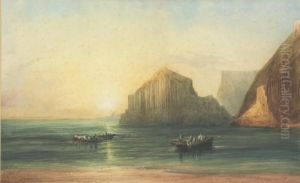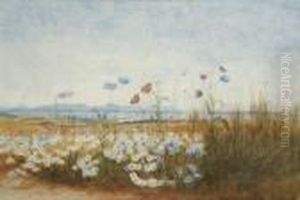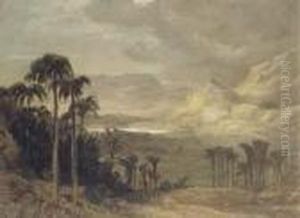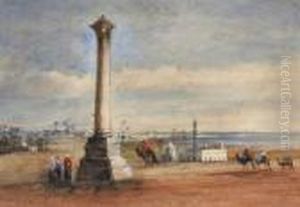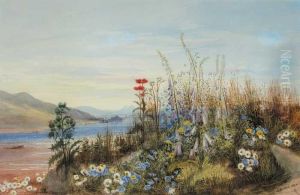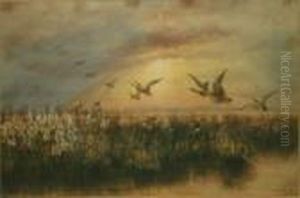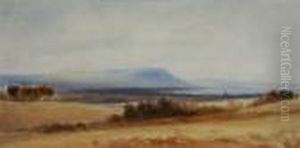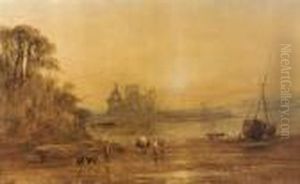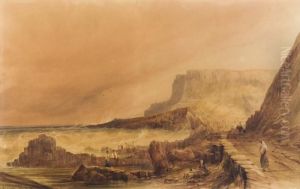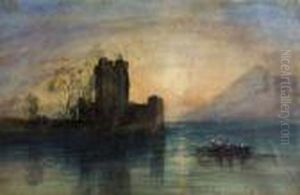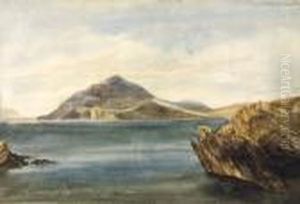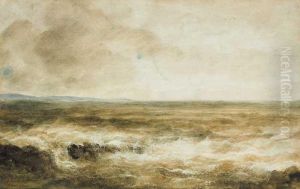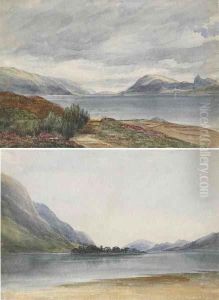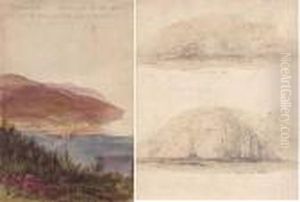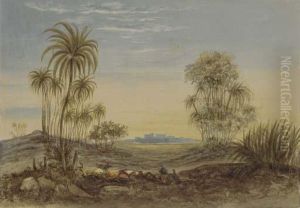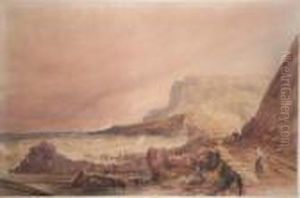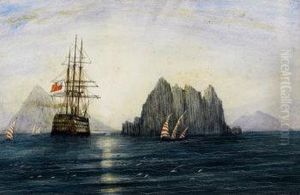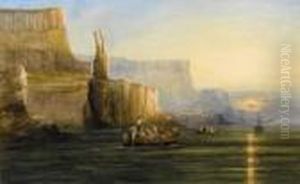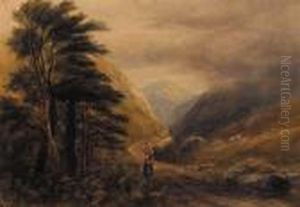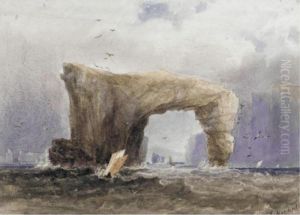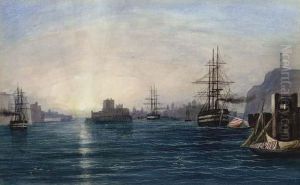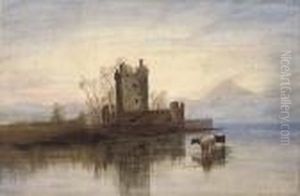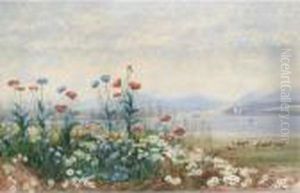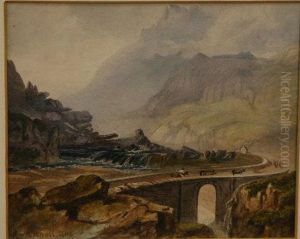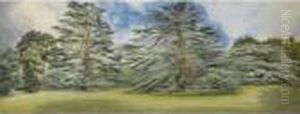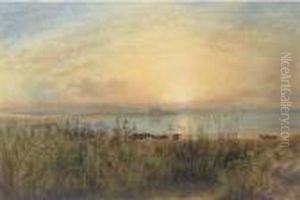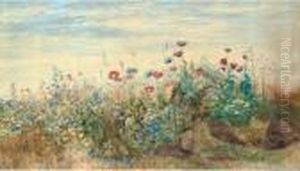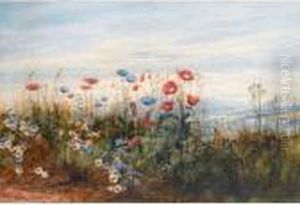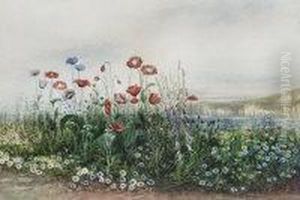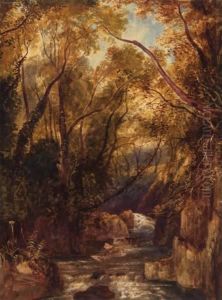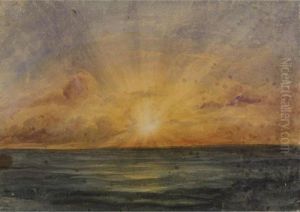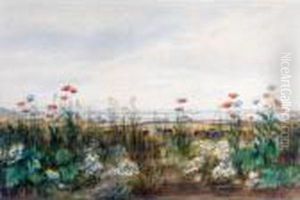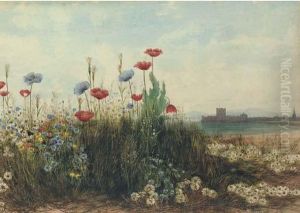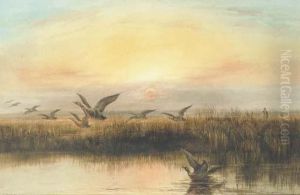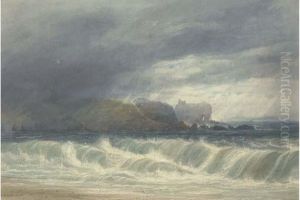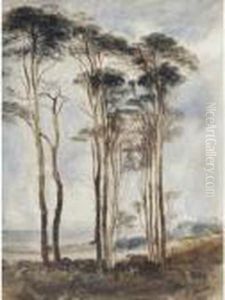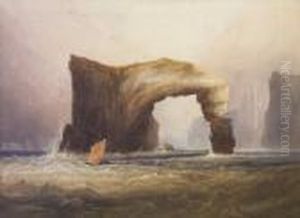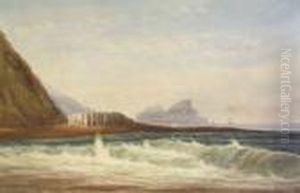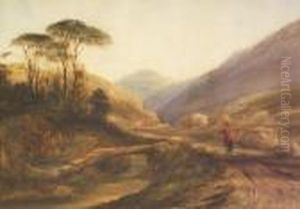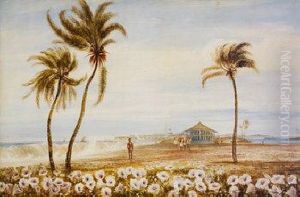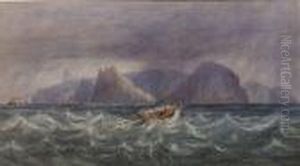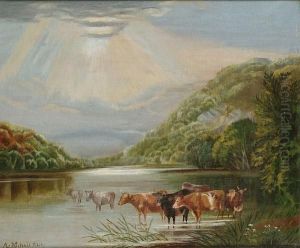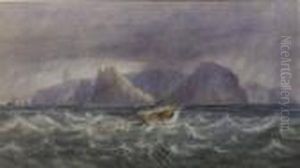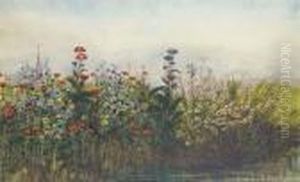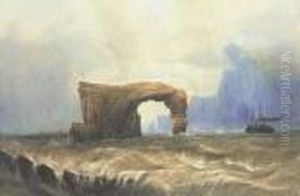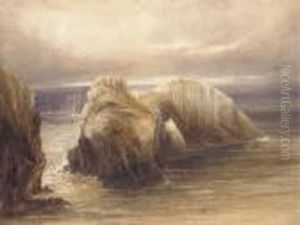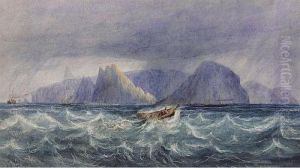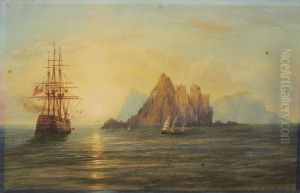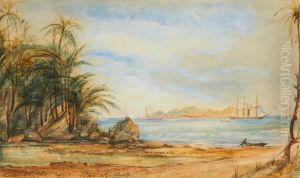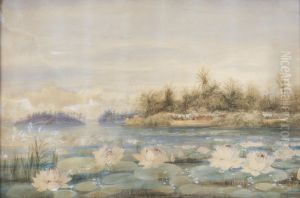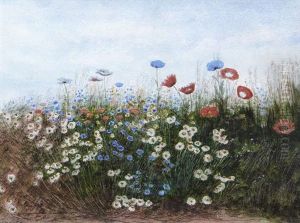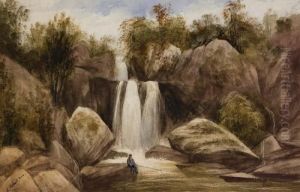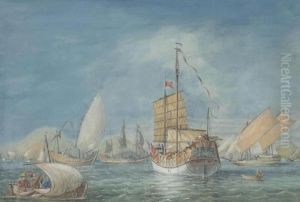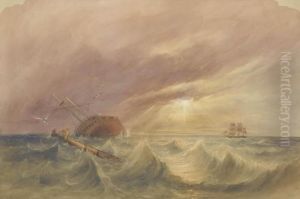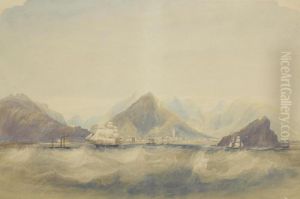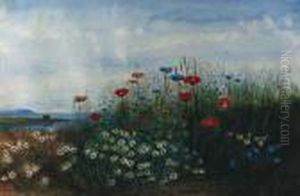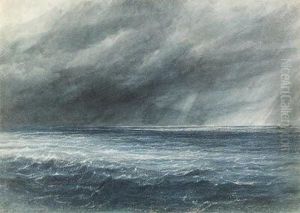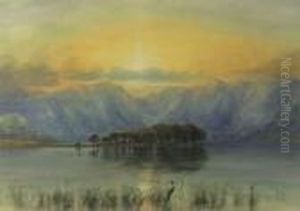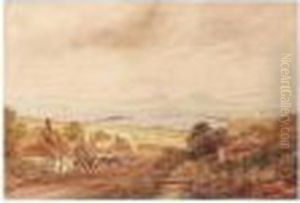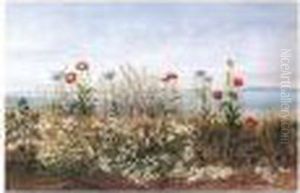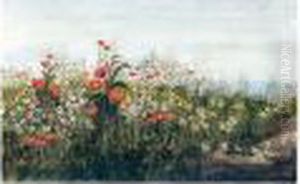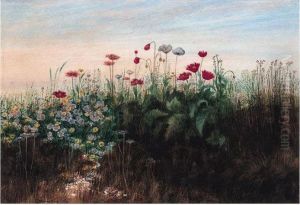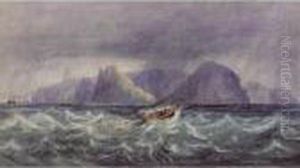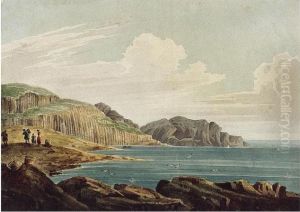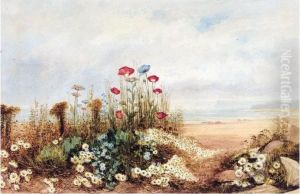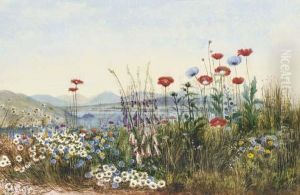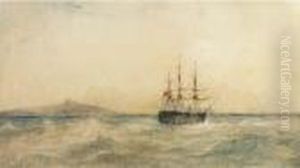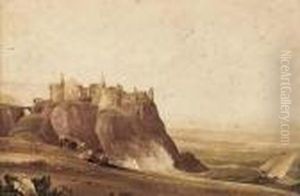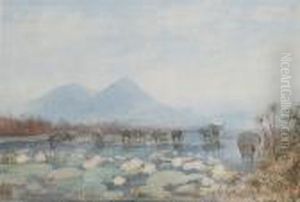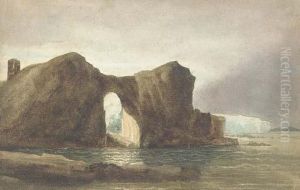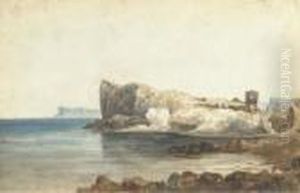Andrew Nicholl Paintings
Andrew Nicholl was an Irish landscape painter born in Belfast, Northern Ireland in 1804. He began his career as a self-taught artist, developing a distinctive style characterized by his attention to detail and his ability to capture the natural beauty of his homeland. Nicholl's work often included depictions of the Irish countryside, coastal scenes, and botanical subjects. He initially worked as a clerk but spent his spare time sketching and painting, eventually dedicating himself fully to his art.
Nicholl's talent was recognized early on, and he was encouraged by patrons and fellow artists. In 1828, he was one of the founding members of the Belfast Association of Artists, and his career began to flourish. His work was exhibited in Dublin and London, and in the 1830s, he received a major boost to his career when he was commissioned by the Belfast Natural History Society to illustrate a series of exotic plants.
In 1836, Nicholl moved to London where he continued to work and exhibit. His paintings caught the attention of the Royal Family, and in 1837, he was commissioned by Queen Victoria to paint views of Windsor. Nicholl's reputation continued to grow, and he was elected as an Associate member of the Royal Hibernian Academy in 1840. Despite his success in England, Nicholl never forgot his roots and continued to paint Irish scenes throughout his life.
In 1846, Nicholl embarked on a significant trip to Ceylon (now Sri Lanka) where he spent several years. The exotic landscapes, flora, and fauna of the island had a profound effect on him, and he produced a series of paintings that were markedly different from his Irish works. These pieces were characterized by their vibrant colors and the lushness of the tropical environment.
Nicholl returned to Ireland in the 1850s where he continued to paint and exhibit his works. He remained an active member of the artistic community in Belfast and Dublin. Despite his earlier success, Nicholl faced financial difficulties in his later years. Nevertheless, he continued to create art until his death in Belfast in 1886.
Andrew Nicholl's legacy lives on through his contributions to Irish art. His works are held in many public and private collections, including the National Gallery of Ireland and the Ulster Museum. Nicholl is remembered for his ability to capture the essence of the landscapes he painted, whether the rolling hills of Ireland or the exotic terrain of Ceylon, and his dedication to his craft.
